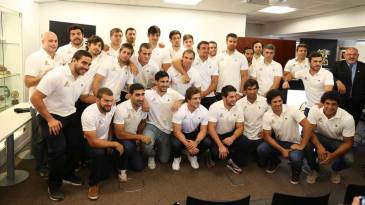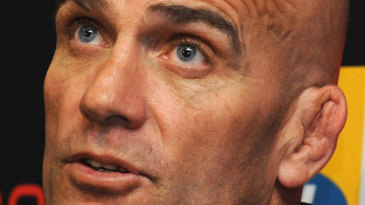With Kimi Raikkonen returning to Formula One in 2012, we look back at ten notable drivers who came back to the sport after time away, both successfully and unsuccessfully

- Drivers:
- Mike Hailwood
- |
- Phil Hill
- |
- Alan Jones
- |
- Jan Lammers
- |
- Niki Lauda
- |
- Nigel Mansell
- |
- Jackie Oliver
- |
- Alain Prost
- |
- Peter Revson
- |
- Alessandro Zanardi
Niki Lauda
What's remarkable about Lauda's return to Formula One is that it wasn't due to a desire to go racing again, but actually fuelled by the need for more funds for the airline he'd set up since retiring; Lauda Air. With two world championships with Ferrari to his name, Lauda was getting frustrated with a lack of progress at Brabham. The BT46B 'Fan car' won its first race but was then withdrawn, and with another win not on the horizon Lauda retired after practice in Canada in 1979. He switched full-time focus to his airline, but needing funds he received a phone call from Ron Dennis at McLaren and after a test at Donington was back on the grid in 1982. He won his third race back at Long Beach, and then again at Brands Hatch but the following year the top step eluded him. Then in 1984 it all came good for McLaren as it dominated the championship and Lauda pipped team-mate Alain Prost to secure his third world title by half a point.
Peter Revson
After an encouraging start in the junior categories, Revson moved up to Formula One with a Lotus-BRM run by Reg Parnell in 1964. Having entered six world championship races Revson started only four, finished only two and recorded a best result of 13th. Following the humbling experience Revson focused on sports car racing in America, but after a one-off appearance at the United States GP in 1971 the bug was back and he joined Yardley McLaren for the 1972 season. Though it seemed a nostalgic move - McLaren team manager Teddy Mayer had managed Revson's Formula Junior team - Revson was soon clocking up impressive results. In two seasons with McLaren he scored two wins and eight podiums despite the car only being quick enough for pole once. In 1974 he switched to Shadow but finished neither race before he was killed while testing ahead of the South African Grand Prix.
Jackie Oliver
Oliver had hardly set the world alight during his first Formula One career, and with only one podium to his name in three seasons by the end of 1970 he decided to focus on endurance racing - though he still entered four grands prix before a full-time return with Shadow in 1973. After another podium during that season he left F1 but stayed with the Shadow team to compete in Formula 5000 and the CanAm series. By 1977 he was team manager, but when Ricardo Patrese was away racing in Formula 2 he stepped in to replace him, four years since he last raced at the top level. Though 31 cars attempted to qualify, Oliver easily made it on to the grid and then delivered a mature drive to finish ninth. Although no points were forthcoming he still managed to finish on the lead lap while team-mate Alan Jones limped to 17th, five laps down.
Alain Prost
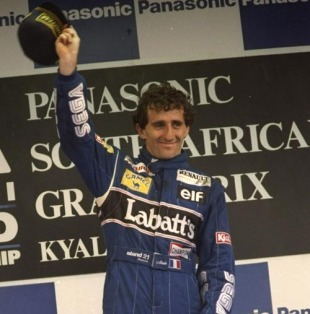
After his relationship with his then McLaren team-mate Ayrton Senna soured in 1989, Prost moved to Ferrari in 1990. Reviving the team's fortunes, he only lost out on a fourth world championship because Senna ran him off the track at Suzuka, but 1991 was a dismal year as he failed to win and he was fired for criticising the team before the end of the season. Prost moved in to the commentary booth in 1992, but he couldn't bring himself to retire yet and after a year out he joined Williams. The timing was perfect as the team had dominated in 1992 but Nigel Mansell fell out with Frank Williams and left for IndyCar. Prost stepped in as number one and didn't need any time to get up to speed as he won first time out at Kyalami. It looked like being another close battle between Prost and Senna, with the latter winning at Monaco to open up a five point lead in the championship standings. Prost was fully back in the groove by then, however, and four rounds later he had a commanding lead having won all four races. He sealed the championship with two races still to run and with Senna poised to join Williams in 1994 announced his retirement.
Mike Hailwood
Having already made a name for himself in motorbike racing, Hailwood tried his hand at Formula One in 1963, finishing both races he entered as he came home eighth at Silverstone and 10th at Monza. That led him to step up his involvement the following year, scoring his first point in the opening race of the season at Monaco of all places. A number of retirements made the rest of the year a disappointment, however, and his focus returned to bikes. When Honda withdrew from bike racing it was expected to only be for a short time, so Hailwood was paid a £50,000 retainer not to ride for another manufacturer. Instead he looked to four-wheel racing more seriously and earned a drive with Surtees in 1971, finishing fourth at Monza in his first race for the team and first grand prix for six years. Impressed, Surtees gave him a seat for the following season and Hailwood responded by delivering the team's first podium finish with second in Italy. When the 1973 car proved unreliable and Hailwood didn't score, it was a mark of his reputation that McLaren signed him for the 1974 season.
And some that didn't go so well:
Jan Lammers
Worthy of his place on the list solely for the amount of time between appearances, Lammers holds the record for the longest gap between grand prix starts. He took the orthodox route in to Formula One, graduating the year after winning the European Formula Three title in 1978. A full season with Shadow was disappointing, and he remained in uncompetitive cars until he quietly slipped away in to the world of sports cars at the end of 1982. He was a success in the tin tops but ten years later Lammers was back as he was drafted in for the final two races of the season at March. While he didn't see the flag in Japan, he did stay out of trouble to finish 12th at Adelaide. Unfortunately his hopes to remain in the sport were ended when March closed its doors ahead of the 1993 season.
Alan Jones
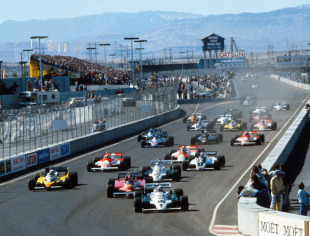
Having won the world championship for Williams in 1980, Jones came very close to defending his title in 1981 as he finished third, just four points behind champion Nelson Piquet. His undoing was a tumultuous relationship with his team-mate Carlos Reutemann - who finished a point behind Piquet - and at the end of a tough season he retired to "the best country on earth". It appeared to be an ideal ending as Jones had won his final race in Las Vegas, but after 18 months in Australia the lure of the money in F1 was too much and he returned for a one-off drive with Arrows at Long Beach. He was tempted back full-time late in 1985 and stayed on the following year but the car was unreliable. After finishing only five of the 20 races he entered Jones finally quit for good five years after his original retirement, and on a much lower note than it could and should have been.
Nigel Mansell
The 1992 world champion was guilty of not knowing when to stop, but then that had been in his nature throughout his career. During his title-winning year it became clear that Frank Williams wanted either Ayrton Senna or Alain Prost to replace him in 1993, so Mansell headed off to IndyCar. After winning that championship, Mansell returned to Williams following Senna's death and shared the car with David Coulthard. After a slow start he won the season-ending Australian Grand Prix and expected to be retained in 1995 but Williams opted for the younger Coulthard. In a move that was engineered by Marlboro's desire to have a world champion in the team more than anything else, Mansell signed for McLaren instead. His debut was delayed amid rumours he didn't fit in the car, and when he finally appeared at Imola he finished a lap down on team-mate Mika Hakkinen. Next time out in Barcelona a handling imbalance caused him to stop the car after 18 laps and soon afterwards left the team.
Alex Zanardi
Zanardi's early years in Formula One never really got going, as four starts in two years for Jordan and Minardi was followed by a full-time Lotus drive. Having scored only one point in 1993 he survived a huge crash at Spa-Francorchamps but was replaced, before regaining the seat again in 1994. By now Lotus was well past its best and a best finish of ninth saw Zanardi leave Formula One at the end of the season and head to America. In 1996 he was runner-up in the IndyCar series, and he went one better in 1997 before making it back-to-back titles the following year. With added expectation he returned to Formula One with Williams in 1999, and while it too was not the force it once was, Zanardi was completely dominated by his team-mate Ralf Schumacher. Three podiums and a host of solid finishes saw Schumacher rack up 35 points, while Zanardi went through the whole season without scoring and his F1 career was at an end.
Phil Hill
After winning the world championship in 1961 in tragic circumstances - his victory at Monza gave him the title by one point from team-mate Wolfgang von Trips who was killed in the same race - Hill failed to follow up the achievement and left Ferrari at the end of the next season. He moved around between Porsche, ATS, Lotus and Cooper but was unsuccessful at each team before appearing to retire when he didn't enter a grand prix in 1965. However, Hill returned the following year to try and resurrect his career. One entry apiece for both Lotus and Eagle saw him fail to qualify for a race, however, and even though he continued to race in sports cars in 1967, his career ended a year later when he discovered that he hadn't renewed his international competition licence.
Chris Medland is assistant editor at ESPNF1
© ESPN Sports Media Ltd.
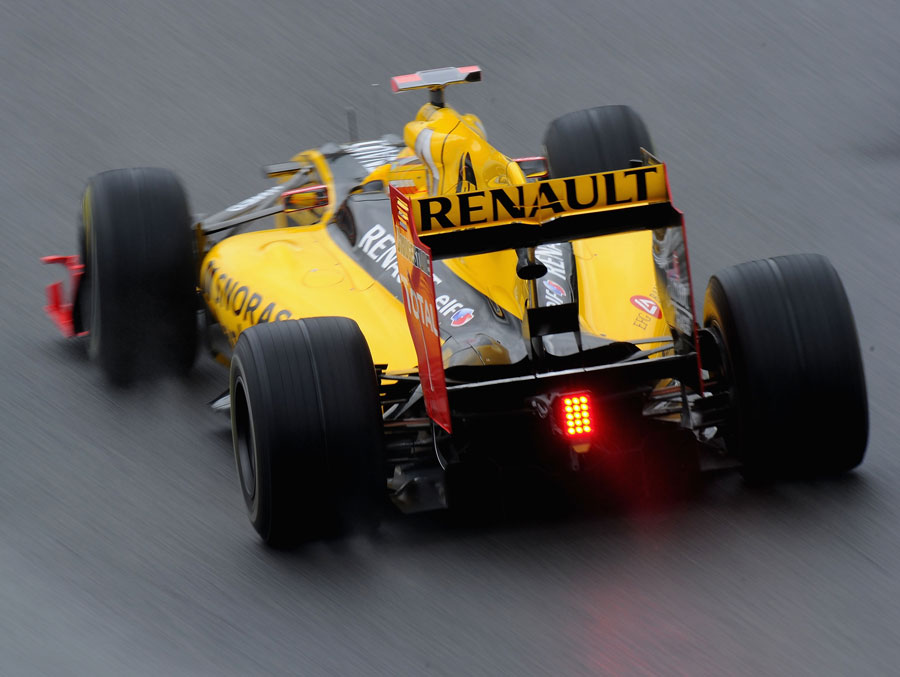 Chris Medland is assistant editor at ESPNF1 Chris Medland, who in his youth even found the Pacific GPs entertaining, talked his way in to work at the British Grand Prix and was somehow retained for three years. He also worked on the BBC's F1 output prior to becoming assistant editor ahead of the 2011 season
Chris Medland is assistant editor at ESPNF1 Chris Medland, who in his youth even found the Pacific GPs entertaining, talked his way in to work at the British Grand Prix and was somehow retained for three years. He also worked on the BBC's F1 output prior to becoming assistant editor ahead of the 2011 season
